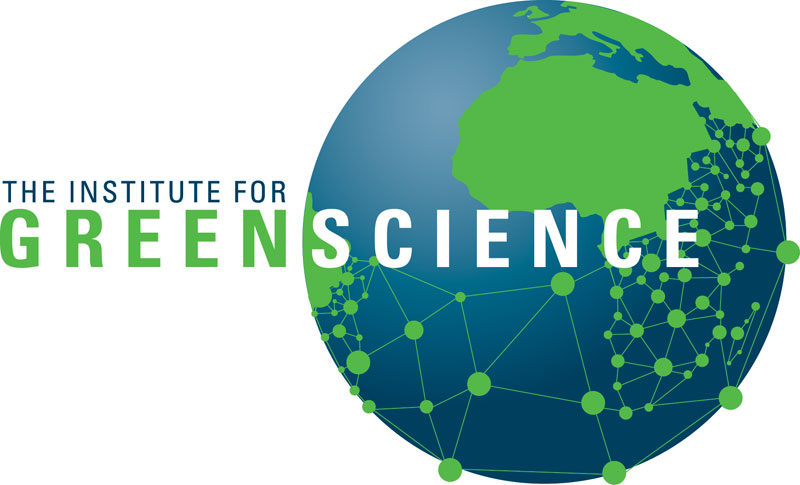Research Overview
The big picture of “where” the IGS provides sustainability leadership in chemistry
The figure shows how the IGS contributes to science and sustainability. One way to consider how chemists advance science and the economy is to examine the big picture of how chemicals flow throughout the global system.
Each day, humans extract tens of millions of tonnes of matter from the ecosphere and bring it into the economy for processing (blue arrow represents this flow).
Chemists working under the blue arrow mostly help to facilitate the extractive processes. In the healthiest-for-sustainability chemical research here, chemists try to advance solar energy capture and conversion. With solar, the mass transfer does not occur on Earth. It occurs 92 million miles away in the sun and Earth gets a tiny portion of the radiant energy as a vast economic oversupply free of any environmental degradation.
Once in the economy, chemists make chemicals and materials. The result is that tens of thousands of novel chemical compositions that nature had not seen until the last century circulate throughout our existence (grey arrow), including throughout us and all other living things.
The naïve supposition that any novel chemical would have no negative health, environmental and fairness performances is a major reason why we are in a sustainability dilemma today with chemical toxicity.
It has proven to be virtually impossible to remove an unsustainable chemical once it has become deeply ensconced in the economy.
After the economic value of any chemical product or process has been exhausted, the spent matter is ejected from the economy back to the ecosphere (deep red arrow).
Here, historically, there has been almost no focus on the sustainability implications from chemistry, other than to support the analysis of resulting environmental degradation. You can’t make much money from economically-spent matter, right?
Technologies that reduce the toxicity of the exit arrow could be a boon for securing a less toxic future.
The IGS has the most powerful catalytic systems ever invented for dealing with the red exit arrow.
On the Sustainability Performances of Chemical Technologies
In the Institute for Green Science (IGS), we define sustainable chemistry around the original conception of “performances.”
With respect to sustainability, all chemical technologies are defined by five performances: technical, economic, health, environmental and fairness.
Throughout the history of the chemical enterprise, technologies have been launched almost invariably on the strength of high technical and economic performances alone. The health, environmental and fairness performances too often have manifested later as unexpected downsides, often associated with enormous externalized costs that land on the future.
Our global civilization is in the grip of the unsustainable dynamic that results from not realizing how important health, environmental and fairness performances are in upfront design, with multiple profitable and high technical performance chemical and energy technologies being practiced on massive scales while also being unsustainable.
Thus, IGS leadership partners with colleagues at CMU and globally who bring the expertise needed to parameterize the health, environmental and fairness performances of chemicals and to craft solutions to sustainability challenges that incorporate this knowledge, typically involving catalytic oxidation technologies.
We use our catalyst development program and the applications it spawns, especially for water purification, as a testing bed for showing how to optimize all five performances in the value proposition of a chemical technology.
This includes examining the low dose adverse effects, typically ignored by regulatory chemical science, that give rise to the problems of the loss of fish in our inland waterways and, it is reasonable to postulate, the dramatic decline in recent decades in reproductive potential in western man and in recent years in China.
We participate with the world leaders of endocrine disruption science to figure out how to best test whether or not a chemical is an endocrine disruptor, or more broadly, to test whether it can elicit low dose adverse effects in living things.
We are providing for society a model case study for how to move the chemical enterprise toward sustainability.

